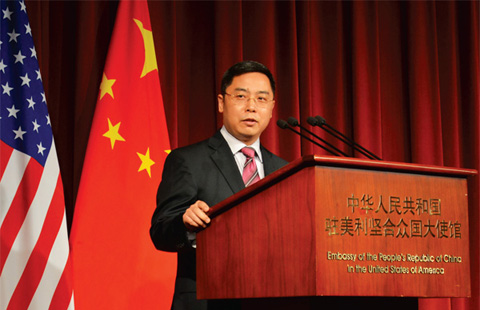Trade diversity important for China, Latin America relationship: Analysts
Updated: 2015-06-08 04:34
By PAUL WELITZKIN in New York(China Daily Latin America)
|
||||||||
While Latin America's perceptions of China are generally positive and mainly driven by economics, according to a Pew Research survey, there are some soft spots including a lack of diversity in trade between the two regions.
Harold Trinkunas, director of the Latin America Initiative at the Brookings Institution and a participant in a May 27 discussion that focused on perceptions of China in Africa, Europe and Latin America hosted by Brookings, said Chinese Premier Li Keqiang addressed this issue in his recent trip to Latin America.
"It is true that governments in South America are concerned that too much of their trade with China is concentrated on the export of agricultural products and minerals, and not enough on value-added products such as manufacturing," Trinkunas said.
"In Central America and Mexico, local manufacturers are concerned about unfair competition from imported Chinese products. In his recent visit to the region, Premier Li indicated that China had heard these concerns, but we will have to see if in practice, Latin America is able to export products with higher valued-added to China."
Eric Farnsworth, vice-president of the Council of the Americas, said trade relations between China and Latin America are unbalanced, but the premier's trip may mark a change.
Chinese leaders are listening and during the recent visit of Premier Li, numerous comments were made publicly about China's desire to invest in the region and co-produce along with local manufacturers using local content and labor, Farnsworth said.
Trade will primarily continue to be commodities-based for the near future, but a process of change may be underway, particularly in market-friendly nations such as the four countries on Li's itinerary (Brazil, Chile, Colombia, and Peru), he said.
Trinkunas acknowledged that there is also some concern in Latin America over the environmental impact of Chinese trade in the region. This concern arises more from recent Chinese investments in Latin America, particularly in mining and oil production. "China would do well to examine the experiences of previous international investors for lessons, good and bad, and consider adopting corporate social responsibility practices that meet global standards. This will help to minimize friction over Chinese investments in the region," he suggested.
Farnsworth said sensitivities around environmental issues are growing across Latin America as the region becomes wealthier.
Chinese companies must recognize that environment protection is a public priority across the region, with expectations that foreign investors will follow environmental best practices, Farnsworth said.
An open, transparent, and inclusive process with government, local, and NGO officials will ensure that projects are environmentally sustainable and lead to the win-win scenarios that investors seek, said Farnsworth.
From 2000 to 2013, trade between China and Latin America increased 22 fold, from $12 billion to over $270 billion. Between 1990 and 2009, China invested only $7 billion total in Latin America. After 2010, China has invested $10 billion to $14 billion per year in the region, with Brazil, Peru and Venezuela as the largest recipients, Brookings said.
Trade between China and Latin America is expected to continue to grow, and Trinkunas said this may produce some concern in the relationship.
"There will be concern in countries that run large trade deficits with China, principally Mexico, and among the manufacturing sectors in all countries where Chinese imports are a significant source of competition," said Trinkunas.
Farnsworth disagreed. He said he didn't see any particular tension so long as trade flows become more balanced and trade and investment activities become increasingly consistent with the social values of the region.
paulwelitzkin@chinadailyusa.com

 Rescuers mourn victims on seventh day since Eastern Star disaster
Rescuers mourn victims on seventh day since Eastern Star disaster
 Rescuers enter Eastern Star hull in search efforts
Rescuers enter Eastern Star hull in search efforts
 Gaokao held across China
Gaokao held across China
 Man sues actress for staring at him
Man sues actress for staring at him
 Students prepare to take national college entrance exams
Students prepare to take national college entrance exams
 Across America (May 29- June 4)
Across America (May 29- June 4)
 Operation underway to turn the ship over
Operation underway to turn the ship over
 Prayers held for ship passengers
Prayers held for ship passengers
Most Viewed
Editor's Picks

|

|

|

|

|

|
Today's Top News
China gives its yuan to Broadway
Heavyweight Zhang wins unanimous decision
China mourns Yangtze shipwreck victims as search continues
China signs $50m agreement with FAO to support developing countries
9.42 million students sit national college entrance exam
Death toll jumps to 396
as hopes of finding any
survivor in cruise fade
China, Japan reopen finance talks after delay over sour relations
Hacking claim isn't responsible, Beijing says
US Weekly

|

|






